[ad_1]
Get the best data-driven crypto insights and analysis every week:
By: Tanay Ved
Over the past week, digital asset markets experienced a significant upturn with Bitcoin spearheading a sharp rally to $35k. This surge, driven primarily by growing anticipation around a spot Bitcoin ETF and a combination of other tailwinds, has caught the eye of retail and institutional participants alike. This market movement suggests renewed confidence and indicates a potential shift in the dynamics around digital asset markets. As we explore the factors behind this surge, it’s essential to consider both broader macroeconomic influences and sector-specific developments contributing to the rise.
In this issue of Coin Metrics’ State of the Network, we offer a data-driven market update, focusing on both spot and derivative markets to grasp the factors behind this rise and its wider implications for the digital asset ecosystem.
This past week saw BTC break the crucial $30k price level, with large intraday moves momentarily pushing the largest digital asset by market capitalization above $35k—a level not seen since May 2022. This sharp increase can be attributed to several factors, including the build-up of sector specific momentum, liquidations of shorts and the influence of macroeconomic shifts contributing to the 28% surge since October 1st.
Source: Coin Metrics Reference Rates & Market Data Feed
One significant factor propelling the recent market movement is the escalating anticipation around the approval for a spot bitcoin ETF. Optimism started to build in August when Grayscale emerged victorious over the SEC; the Court of Appeals for the D.C. Circuit ruled unanimously in Grayscale’s favor, a boost to Grayscale’s endeavor to transform the $17B bitcoin trust (GBTC) into a spot ETF. In October, this victory was formalized as the SEC chose not to appeal this ruling—a development that saw GBTC’s discount to NAV tighten from -40% in June to approximately -15% as of October 26th.
Over the past week, however, two other events amplified this optimism. Anticipation reached fever-pitch on October 16th as BTC surged 10% within minutes, spurred by a false report regarding BlackRock’s spot Bitcoin ETF approval. As seen in the chart above, this coincided with a spike in spot volumes, reaching $2B as measured by Coin Metrics’ hourly trusted spot volume. Adding to the momentum, it was observed that the iShares Bitcoin ETF Trust, bearing the ticker $IBTC, made its appearance on the Nasdaq clearinghouse website. Following this news, a cascade of short-sellers were liquidated helping propel BTC price closer to the $35k territory.
Although these events didn’t lead to any material alterations, they highlight the robust market sentiment for such an investment product and hint that its eventual approval may not yet be fully priced in by market participants. Moreover, an uncertain macroeconomic backdrop with US 10-Year Treasury yields climbing over 5% and rising geopolitical tension have also arguably added to the narrative of BTC as a “safe-haven” asset—further contributing to the market shift.
This confluence of catalysts has resulted in BTC returning 110% year-to-date, with 47% of the rise occurring since the beginning of October. When compared to other crypto-assets, traditional assets and indices, BTC’s performance year-to-date remains noteworthy—even when looked at from a risk-adjusted basis. The only assets to outperform it thus far have been technology oriented equities fueled by the boom in artificial intelligence (i.e NVDA, META) and Solana (SOL)—experiencing outsized gains since being suppressed by the FTX fallout in November 2022. BTC remains resilient in the face of equities experiencing a reversal from their highs of late. Indices and assets like the Nasdaq, S&P 500 and Gold, in comparison, have gained 22%, 8% and 9% respectively.
Source: Coin Metrics Reference Rates
Another metric to note is Bitcoin’s market cap dominance as measured against the rest of the datonomy asset universe (excluding on-chain derivatives). BTC dominance has risen to 61%—its highest level since April 2021. Typically, during the initial phases of a market cycle, Bitcoin tends to outpace other crypto assets. This dominance serves as a vital barometer, providing insights into the overall health and directional trends of the broader digital asset ecosystem.
Source: Coin Metrics Formula Builder, datonomy™
The ETH/BTC ratio illustrates the performance of ETH relative to BTC. As indicated in the chart below, ETH’s relative underperformance becomes apparent with the ratio nearing 0.051, a pivotal level last encountered on May 1st, 2021. BTC’s current momentum is propelled by several tailwinds: the likely approval of spot ETFs, prevailing macroeconomic uncertainty, an uptick in illiquid supply, and a confident long-term holder base. These dynamics, explored in depth in a joint research report by Bitcoin Suisse & Coin Metrics, are further amplified by the upcoming halving—creating a critical juncture between demand and supply for the largest digital asset.
Source: Coin Metrics Formula Builder
The relative underperformance of ETH underscores the short-term divergence between the two assets. This can be possibly linked to a slowdown in staking demand (as showcased through an emptying entry queue) amid lower overall on-chain activity. Despite this, there are several silver linings of note. Fees seem to have experienced a notable uptick amidst the broader market rally, helping bring daily issuance back into negative territory. Additionally, the forthcoming Cancun-Deneb upgrade is expected to reduce gas fees and increase transaction throughput—a potential catalyst for increased network and application adoption through Layer-2’s. With bitcoin currently in the limelight, it is likely that ETH also follows suit.
Source: Coin Metrics’ State of the Market, Market Data Feed
This price rally was accompanied by a notable increase in spot volumes. As seen above, aggregated spot volumes across exchanges reached $40B on the back of this surge, rising to a 6-month high. Other than BTC, trading volume on altcoins also contributed significantly to the overall uptick in spot volumes. Liquidity across major exchanges like Binance and Coinbase have remained relatively stable over the past few months, despite falling from levels seen earlier this year.
Source: Coin Metrics Market Data
It’s important to note, however, that derivatives markets had a large role to play in this rally. The primary difference stems from the fact that while participants in spot markets gain direct exposure to the underlying asset, those in derivatives markets achieve exposure through contracts whose value is derived from the underlying asset. While the 7DMA of BTC reported spot volumes rose to $8.6B, BTC futures volume experienced a more pronounced increase to $50B. This trend is also notable over a longer time-frame, with futures volume representing close to 86% of overall BTC trading volume.
Turning to derivatives markets, its dominant role in this surge is noticeable with the increase in BTC futures open interest. BTC futures open interest topped $13B as of October 25th and continues to gain steam. The increase in ETH futures open interest pales in comparison, once again highlighting the differences in current market structure between the two assets.
Source: Coin Metrics Market Data
When broken down by exchange, the largest increase in aggregate open interest stemmed from the CME. Open interest on CME surpassed $8B and is close to reaching levels on Binance (approximately $10B). The rise in open interest across these platforms may suggest a broadening participant base with activity from various market participants, such as institutional investors, professional traders, and retail speculators. Although, definitive conclusions would require a deeper dive.
The recent surge in digital asset markets, primarily led by Bitcoin, reflects a pivotal evolution in market dynamics and investor sentiment. The anticipation around spot Bitcoin ETFs—an investment vehicle absent from prior cycles is poised to open the doors to new capital inflows, further propelling the mainstream adoption of digital assets. The observed macroeconomic headwinds and sector-specific catalysts not only emphasize the intrinsic adaptability and resilience of digital assets but also highlight their increasing relevance in a rapidly shifting global financial landscape. As we move on from this momentous rally, participants will be keen to understand if this momentum sustains and the extent to which these dynamics will shape the trajectory of digital asset markets.
Source: Coin Metrics Network Data Pro
Bitcoin active addresses rose 13% while Ethereum active addresses declined 3% over the week. On-chain activity experienced a broad increase over the week as asset prices rose across the ecosystem.
This week’s updates from the Coin Metrics team:
-
Follow Coin Metrics’ State of the Market newsletter which contextualizes the week’s crypto market movements with concise commentary from the Coin Metrics team, rich visuals, and timely data.
As always, if you have any feedback or requests please let us know here.
Coin Metrics’ State of the Network, is an unbiased, weekly view of the crypto market informed by our own network (on-chain) and market data.
If you’d like to get State of the Network in your inbox, please subscribe here. You can see previous issues of State of the Network here.
© 2023 Coin Metrics Inc. All rights reserved. Redistribution is not permitted without consent. This newsletter does not constitute investment advice and is for informational purposes only and you should not make an investment decision on the basis of this information. The newsletter is provided “as is” and Coin Metrics will not be liable for any loss or damage resulting from information obtained from the newsletter.
[ad_2]
Read More: coinmetrics.substack.com

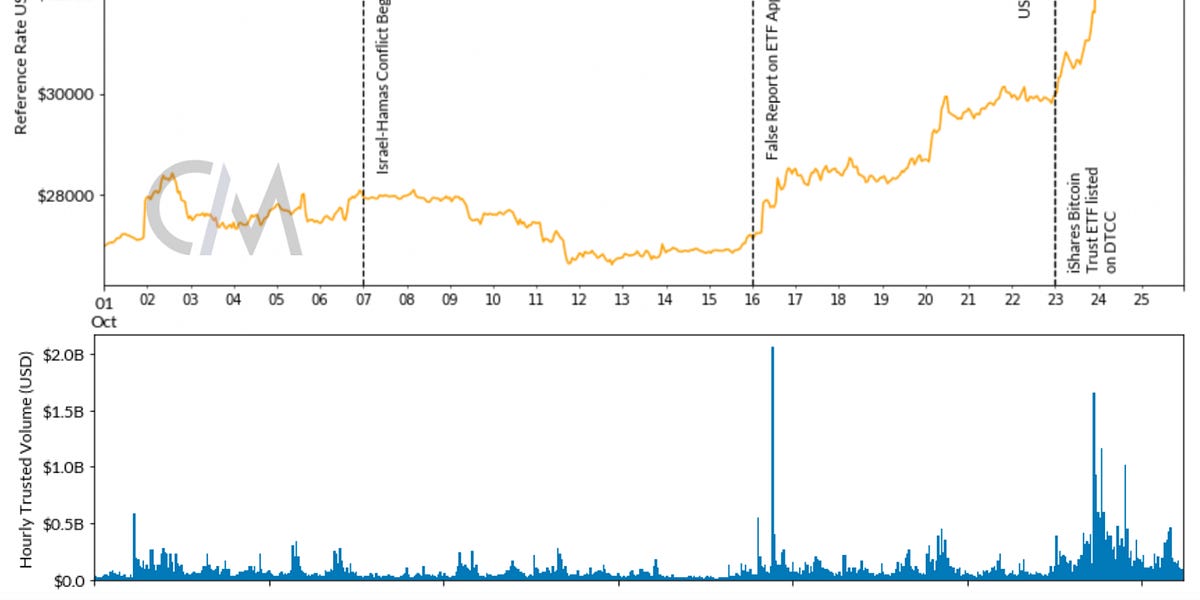

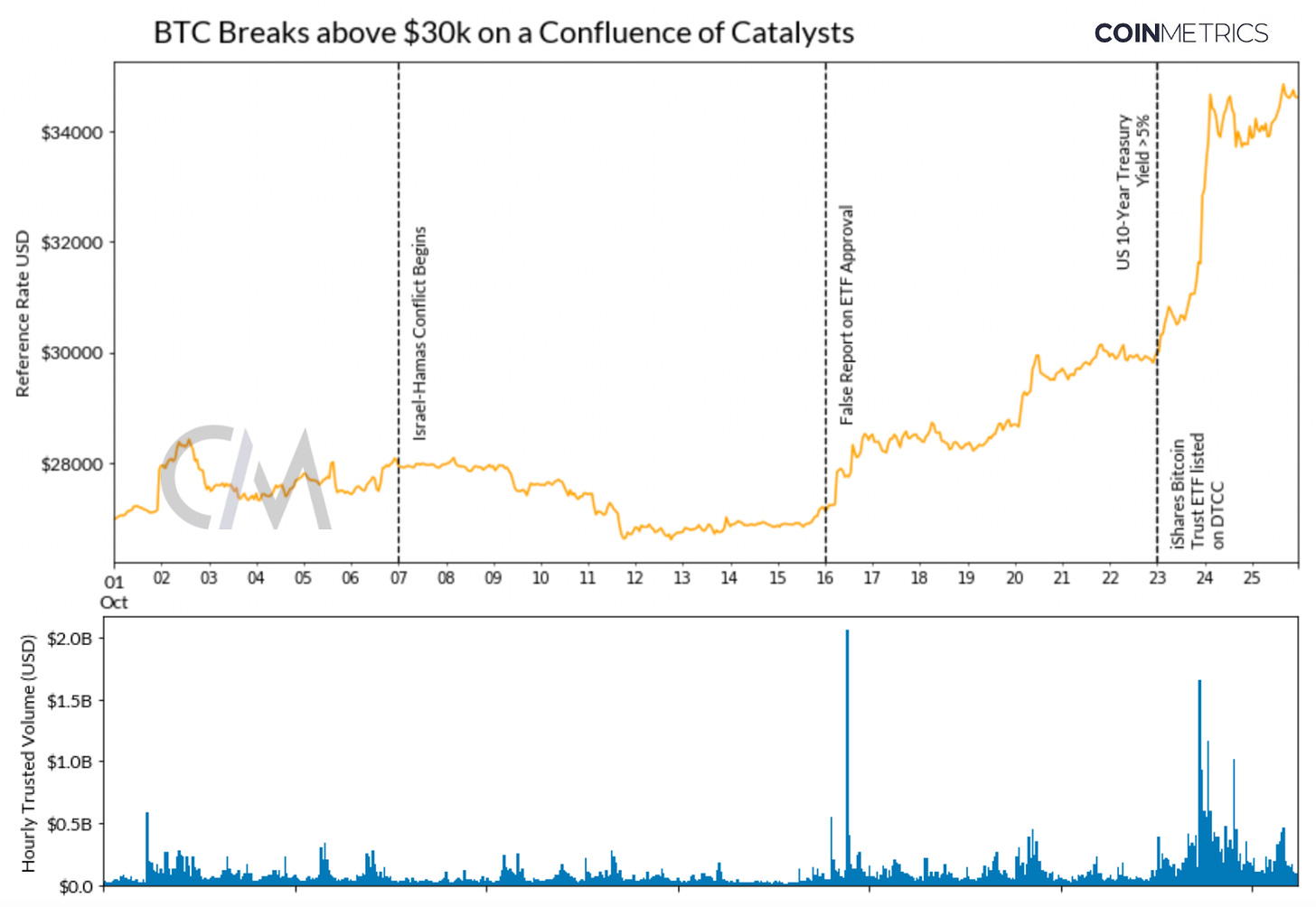

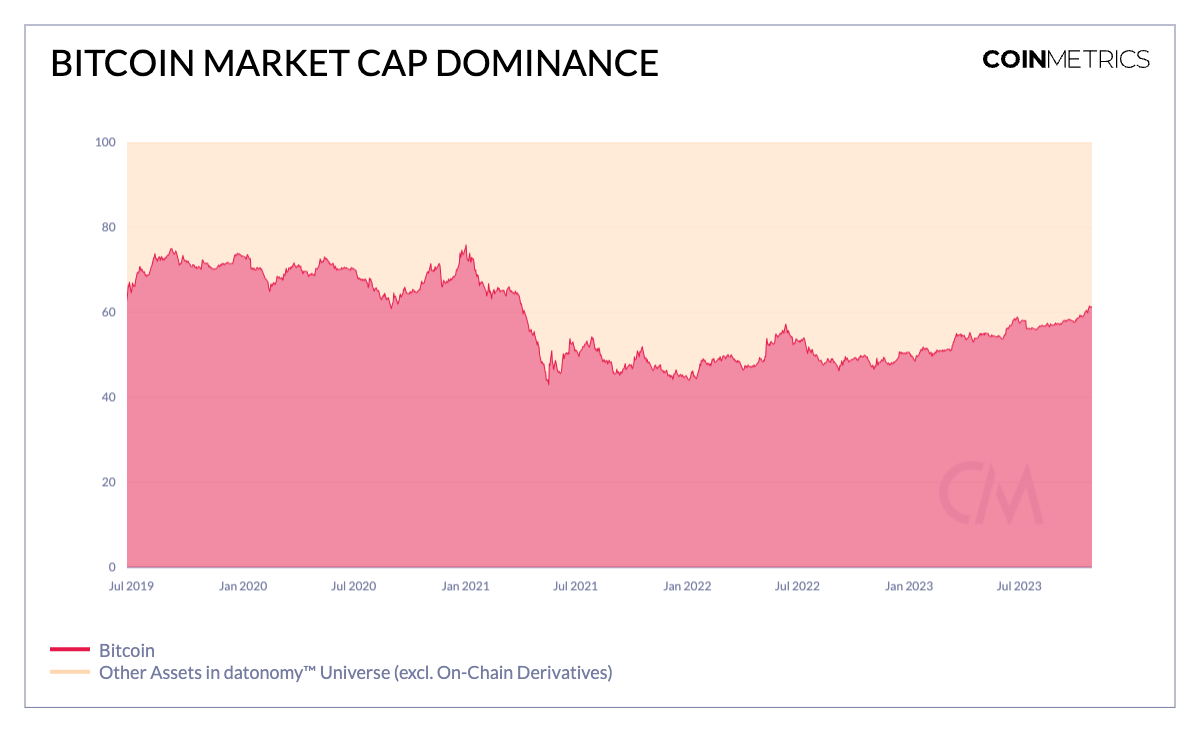
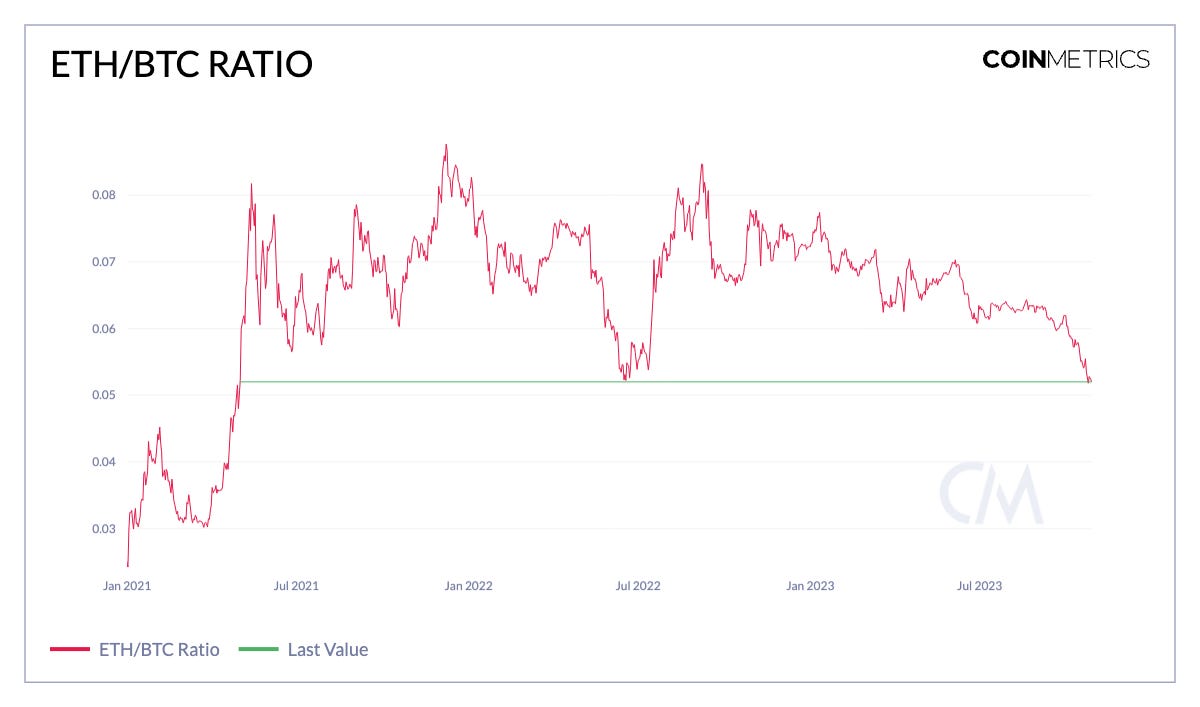
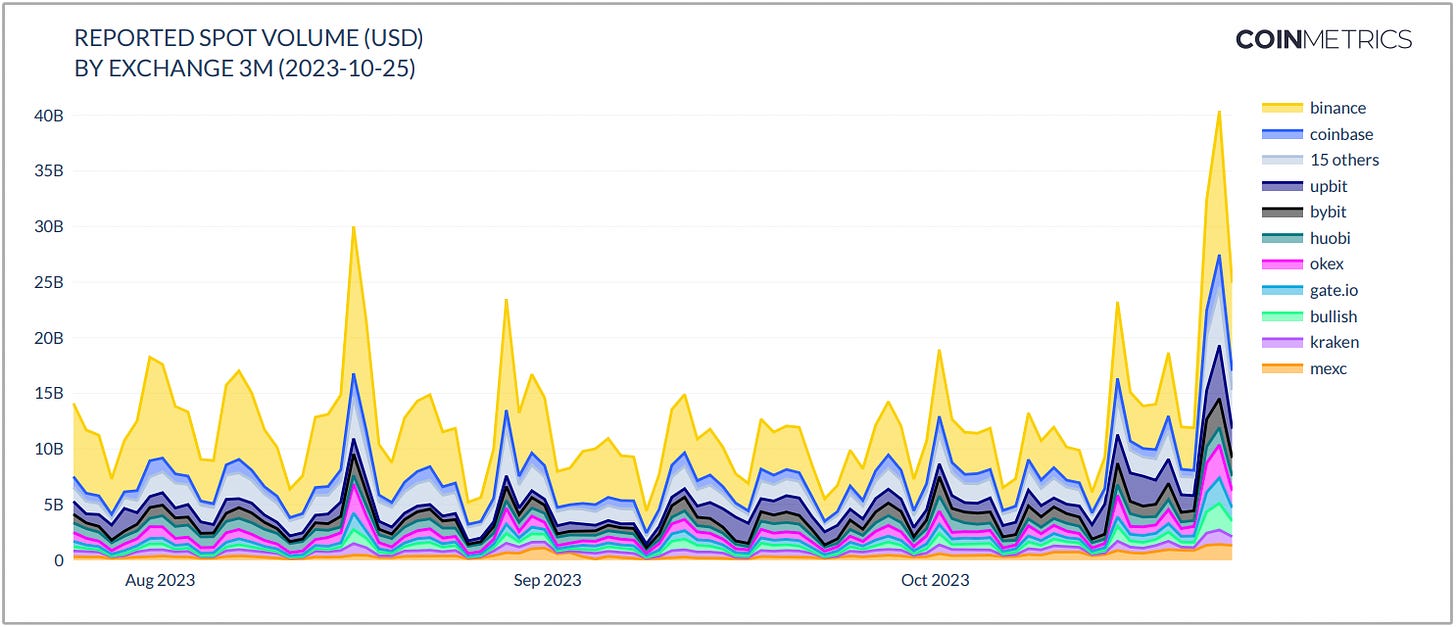
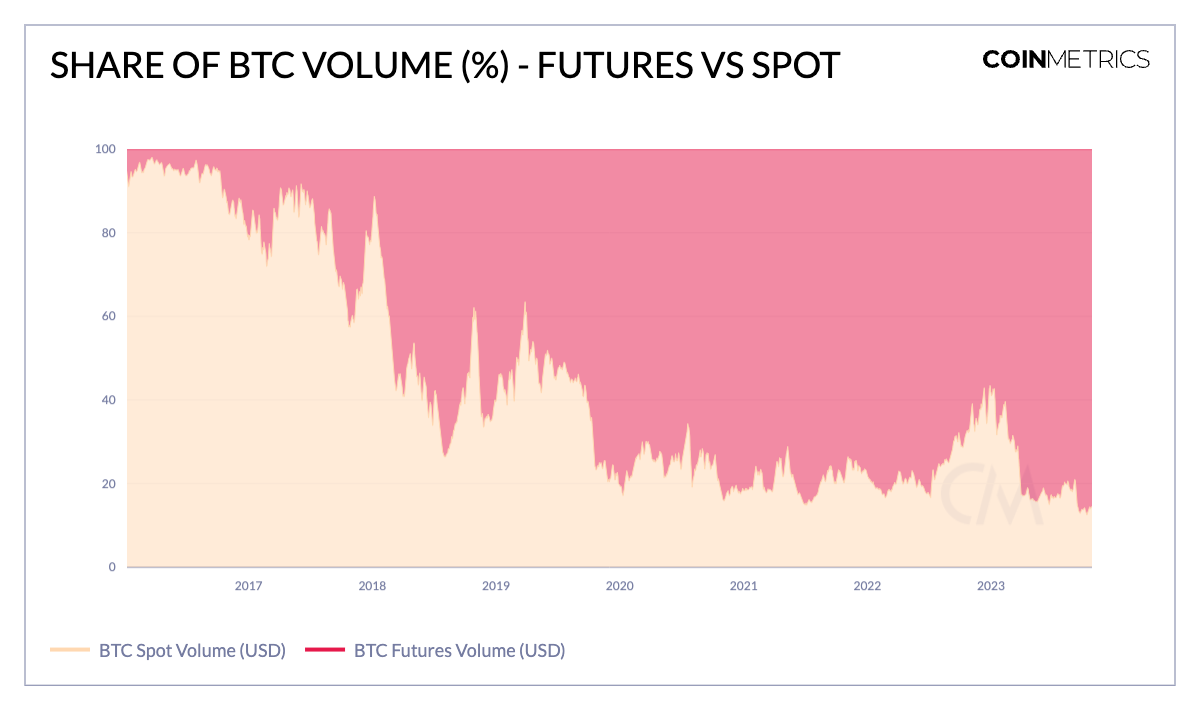










 Bitcoin
Bitcoin  Ethereum
Ethereum  Tether
Tether  XRP
XRP  Solana
Solana  USDC
USDC  TRON
TRON  Dogecoin
Dogecoin  Lido Staked Ether
Lido Staked Ether  Cardano
Cardano  Hyperliquid
Hyperliquid  Wrapped Bitcoin
Wrapped Bitcoin  Wrapped stETH
Wrapped stETH  Sui
Sui  Bitcoin Cash
Bitcoin Cash  Chainlink
Chainlink  LEO Token
LEO Token  Avalanche
Avalanche  Stellar
Stellar  Toncoin
Toncoin  USDS
USDS  WhiteBIT Coin
WhiteBIT Coin  Shiba Inu
Shiba Inu  Wrapped eETH
Wrapped eETH  WETH
WETH  Litecoin
Litecoin  Hedera
Hedera  Binance Bridged USDT (BNB Smart Chain)
Binance Bridged USDT (BNB Smart Chain)  Monero
Monero  Ethena USDe
Ethena USDe  Polkadot
Polkadot  Bitget Token
Bitget Token  Coinbase Wrapped BTC
Coinbase Wrapped BTC  Uniswap
Uniswap  Pepe
Pepe  Pi Network
Pi Network  Aave
Aave  Dai
Dai  Ethena Staked USDe
Ethena Staked USDe  Bittensor
Bittensor  OKB
OKB  BlackRock USD Institutional Digital Liquidity Fund
BlackRock USD Institutional Digital Liquidity Fund  Aptos
Aptos  Internet Computer
Internet Computer  Cronos
Cronos  NEAR Protocol
NEAR Protocol  Jito Staked SOL
Jito Staked SOL  sUSDS
sUSDS  Ethereum Classic
Ethereum Classic